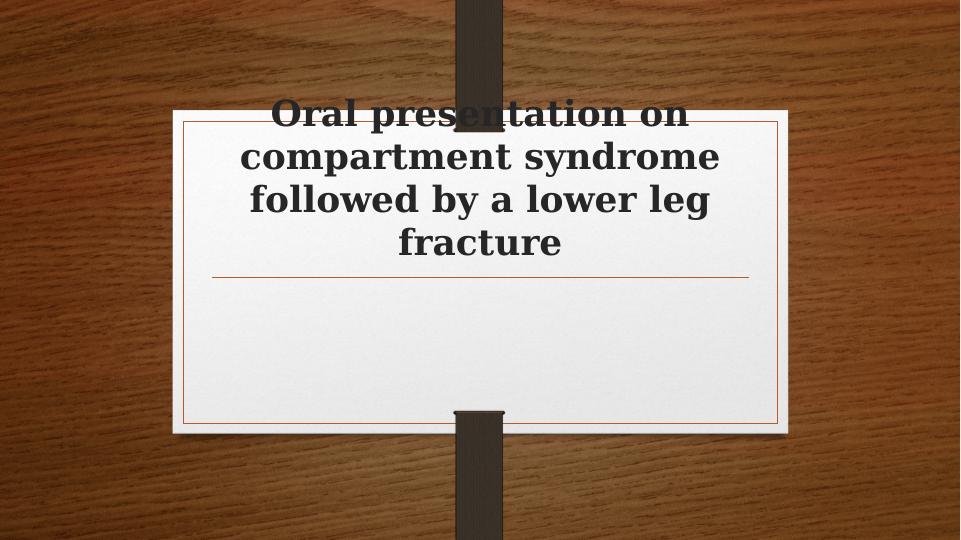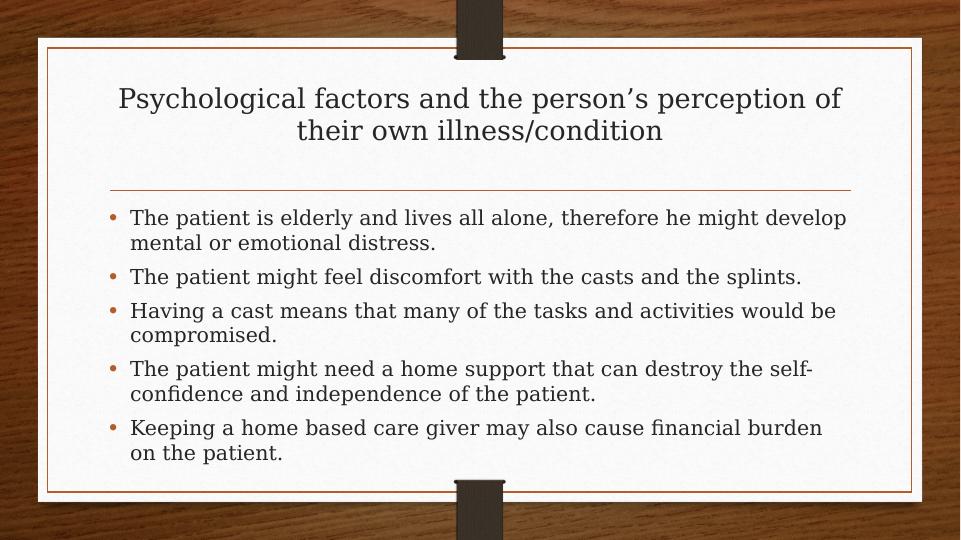Compartment Syndrome and Lower Leg Fracture: Nursing Management and Pharmacological Interventions
A guide to Harvard referencing for Nursing & Midwifery students at the University of Tasmania.
8 Pages1140 Words406 Views
Added on 2023-06-11
About This Document
This oral presentation discusses the nursing management and pharmacological interventions for compartment syndrome and lower leg fracture. It covers the pathophysiology of compartment syndrome and the psychological factors involved. The presentation also includes a discussion on pharmacological interventions, including the rationale for choosing morphine as the medicine for pain management.
Compartment Syndrome and Lower Leg Fracture: Nursing Management and Pharmacological Interventions
A guide to Harvard referencing for Nursing & Midwifery students at the University of Tasmania.
Added on 2023-06-11
ShareRelated Documents
End of preview
Want to access all the pages? Upload your documents or become a member.
Pain Management with Morphine for Compartment Syndrome after Lower Limb Fracture
|8
|1886
|307
Correction of Acute Anemia and Relative Hypertension
|4
|453
|37
CNA253 AT2 Scenario: Mrs Gwen Boren Assignment 2022
|8
|2244
|10
Health and Homeostasis
|5
|945
|366
What do you consider to be normal/abnormal?
|6
|2541
|15
Nursing Assignment: SOAPIE Framework, Nursing Diagnosis, and Goals of Care
|8
|1277
|150



